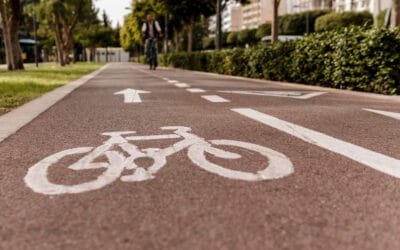
Mobility is revolutionary
Building-integrated photovoltaics (BIPV) have been gaining popularity in recent years as a sustainable and visually appealing solution for buildings. BIPV systems serve both as the outer layer of a structure and generate electricity for on-site use or export to the grid. They can provide savings in materials and electricity costs, reduce pollution, and add to the architectural appeal of a building
However, with the introduction of movable BIPV solutions, the benefits of BIPV have been taken to a whole new level. The Zonnebloem self-protecting PV system and the dual-axis tracking PV solar façade by The Bucky Lab are two examples of movable BIPV solutions that are revolutionizing building design.
The Zonnebloem
 © TU Delft / Bucky Lab
© TU Delft / Bucky Lab
The Zonnebloem is a concept for a solar façade that will not only generate clean electricity to help in the fight against climate change, but will also be designed to cope with some of the expected consequences of climate change. In Environment mode, Zonnebloem folds up in response to unfavorable weather conditions in such a way that its retraction system pulls it back into a closed state, thus protecting it from disaster. In Performance mode, Zonnebloem transforms the static façade into a performative one by displaying user-controlled graphics. Zonnebloem aims to amaze and engage people and demonstrate the integration of sustainable design into our built environment.

© TU Delft / Bucky Lab
Solar Tracker

© TU Delft / Bucky Lab
The dual-axis tracking PV solar façade is another movable BIPV solution that follows the sun’s movement to generate maximum solar energy. This system is designed to be integrated into the building’s façade and can be controlled through a smart system to optimize energy production.

© TU Delft / Bucky Lab
As the sun moves across the sky during the day and according to the time of season, the PV elements track the sun, making the most of the solar energy while providing perfect solar shading at all times.
Suncurtain

SunCurtain GmbH
These solar blinds are very similar in form and function to traditional curtains. The only difference is that they also generate electricity
Innovative startup SunCurtain, which turns every window into a green power plant, offers a new and exciting development in OPV commercialization. SunCurtain offers shading systems made entirely from OPVs, inspired by the fight against climate change. In addition to movable BIPV shading and solar facade solutions, solar blind shading systems are another innovative solution that can generate electricity while providing shading for buildings. These systems are designed to be installed over windows and can be controlled to adjust the amount of sunlight entering a building. They are ideal for buildings that require a significant amount of shading, such as offices and hotels.
 SunCurtain GmbH
SunCurtain GmbH
Summary
As architects and construction companies continue to seek sustainable building design solutions, BIPV technology is becoming an increasingly popular choice. By becoming a member of BIPVLoft, architects and construction companies can stay up-to-date with the latest BIPV solutions and join the movement towards sustainable building design.
In conclusion, movable BIPV solutions such as the Zonnebloem self-protecting PV system, the dual-axis tracking PV solar façade “Solar Tracker”, and solar blind shading system like SunCurtain are revolutionizing building designs. By incorporating these solutions into your building design, architects, construction companies, and anyone can reduce energy costs, increase energy efficiency, and create visually stunning buildings that are sustainable for the future.






